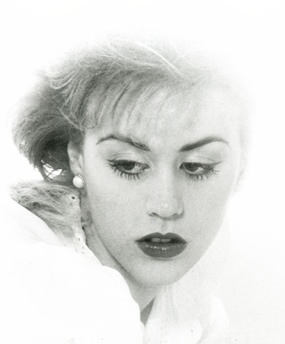Have we become too smart for our own good? Has technology taken over where good photographic sense left off? I used to use a battered old Nikon FM2N. A mechanical camera with manual everything, focus, aperture and shutter settings. With modern cameras able to produce perfect photographs, according to the publicity blurbs if nothing else, why would I use a battered old Nikon, which is manual in operation?
According to the blurb, as all I have to do is set the new digital camera on A for Automatic and its little electronic chip brain does all the rest. I do not need to know “how” it does it. Leave it all to the electronic circuits.

Unfortunately, this is not quite the case, in fact it can be quite the reverse, as there are many situations where your brains beat electronic brains. Do not listen to the technocrats, listen to me!
The first area is that of focusing. I have written about this many times, but modern auto-focus cameras deliver more “out of focus” shots than manually focused cameras. Why? Simply because the camera’s electronic brain has no idea what the subject of your photograph really is. The electronic gizmos sharply focus on a small spot right in the center of the viewfinder, and if that spot isn’t directly over your subject, you have just got yourself an out of focus photo. A classic example is the shot of a couple. There are two heads, one each side of the magic central spot, which is then making the camera focus on the background, several kilometers away! The two heads, close to the camera are out of focus.
The next good reason to go manual is when you wish to take an action shot. You want to “stop” the motion, so you know you will need a fast shutter speed. Takes one twist of the dial and I’ve got 1/2000th of a second. With the fancy camera, you generally have to push a button to get the “menu”, scroll down to find the “action man” logo and select “on”. I was many times quicker than you – and, what’s more, I got to select the shutter speed I wanted. You get what the camera decides you want! There is a big difference in stopping a speeding railway train compared to stopping Miss Lotus Blossom as she jogs past your front gate. Manually you can select that faster shutter speed from the complete range – even to the point of allowing a little blur to show dynamic movement. The electronic brain cannot do that, sorry!
Likewise when you want to make the romantic portrait by the window. The suffused light from the white curtain makes for a soft quality to the photograph. But does the electronic brain know this? No! It hasn’t a clue. You have gone through the menu and scrolling bit, and now you (or rather “it”) have the camera ready to go in the “portrait” mode, with a wide open aperture to give a short depth of field. Unfortunately, as you compose the shot, all it “sees” is a strong area of light and reduces the amount of light going to fall on the magic pixels by upping the shutter speed (because the aperture is fixed in the portrait mode). Guess what this does? It gives you a pale background and dark, dark, features on the subject, and if your subject has a dusky skin to begin with you have just turned it black. Not a good look, according to Thai females.
No, what that shot needs is a human brain that can dictate to the manual camera the exposure details needed for the correct exposure for the face, allowing the background to “flare” mistily around the subject. Microchips be damned!
Another area where the electronic brain is clueless is when you want to take tricky shots using the flash. Yes, by having total manual control I can use the flash at full power in the bright sun, something the electronic brain would consider a no-no!
For creativity and the sheer “joy” of photography, use your brain instead of the camera’s one. Yours is much better! Believe me!




